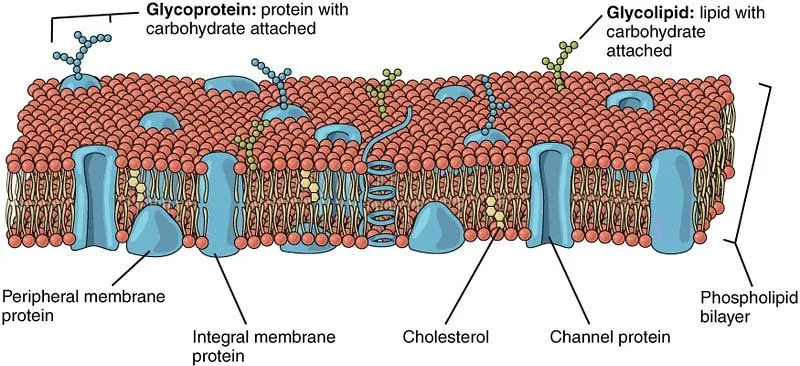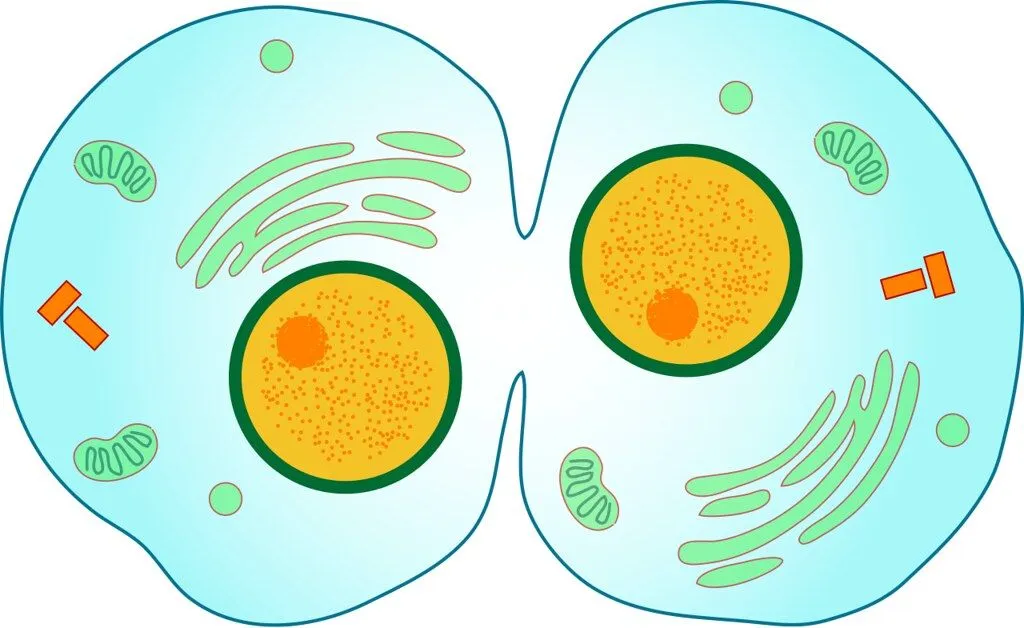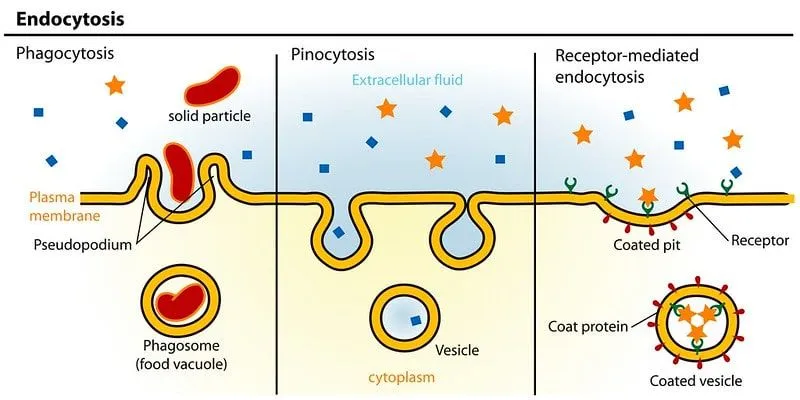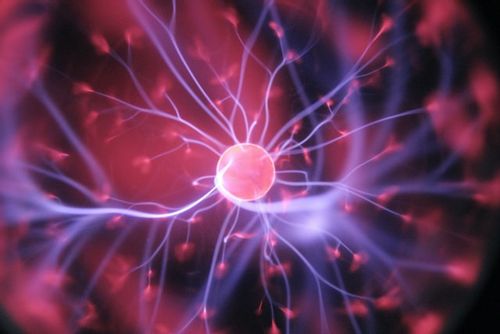FOR AGES 11 YEARS TO 16 YEARS
Image © Needpix.com, under a creative commons licence.
In your body, there are trillions of cells that help you do everything.
Each of these tiny cells has an even tinier cell membrane surrounding it. These parts of the cell are responsible for deciding what goes in and out of their cell.
This is a very important job, and the cell membrane is made up of lots of complex parts that make sure everything goes smoothly. Learn more about these incredible features with our 12 amazing facts about cell membranes.
If you are interested in learning more about cells, making models of cells is a great way to expand your understanding. Many important scientific breakthroughs were also discovered when scientists developed models of their ideas and figured out what works. Have a go at making your own cell with our guide to making a plant cell model. Or, if you just want to learn more about how science works, you can check out our collection of exciting online science classes and events.
The cell membrane is an important part of all cells. Here's Why:
1) The cell membrane, also known as the plasma membrane, is a thin layer that separates the inside of the cell from the outside. Lots of things happen in our cells, including functions that we need to survive, so it is important that the right things are inside the cell when they need to be.
2) In order for the cell membrane to do its job properly, it needs to be semipermeable. This is a fancy word which basically means that the membrane allows some materials to pass through it, whilst others cannot. This is a really important function of the cell membrane as it means the cell membrane can regulate what goes in and out of the cell.
3) In animals and humans, the cell membrane is the only layer between the cell and the outside. However, other living things like plants and bacteria also have a cell wall, which goes around the cell membrane to offer extra protection.
The structure of a cell membrane allows it to do many of its necessary functions.
4) The structure of the cell membrane is what makes it semipermeable. The structure of the plasma membrane is a phospholipid bilayer. A phospholipid is a lipid (a type of fat) made out of a phosphate head and two fatty acid tails. It looks a little like a weird jellyfish.
5) The membrane of a cell is made up of two layers of lots of phospholipids lined up next to each other, with the phosphate heads pointing in opposite directions. The phosphate heads are on the outside of the membrane because they are 'hydrophilic', which means they love water. The fatty acid tails are on the inside of the membrane because they are 'hydrophobic', which means they fear water. There's lots of water on either side of the membrane, which is why the phospholipids line up the way they do.
6) The structure of a cell membrane can be seen using a fluid mosaic model. The fluid mosaic model shows how the phospholipid bilayer makes up most of a cell membrane. There are also proteins and cholesterols in cell membranes, which help to let materials pass through the membrane when they need to.
7) There are many different types of proteins that can be found in cells. Integral proteins, also known as channel proteins or transport proteins, can go from one side of the cell's membrane to the other and allows ions and other molecules to pass through. Other proteins in the membrane include peripheral proteins, which help to control the properties of the membrane.

Image © Wikipedia, under a creative commons licence.
8) Some molecules, which are very important for the function of the cell, can pass through the membrane easily, such as oxygen and carbon dioxide. However, when there is a molecule that needs to enter or leave the cell at a specific rate, it has to pass through the proteins in the membrane. This rate is called the rate of diffusion and is one of the ways the cell membrane controls what goes on in the cell.
The ever-shifting structure of the cell membrane helps it to do some pretty cool things.

Image © Wikipedia, under a creative commons licence.
9) Animal cells divide through a process known as mitosis. This is when the DNA of a cell separates and the cell splits in two. In doing so, a new membrane forms between the two new cells. This is called cytokinesis and occurs when the cytoplasm forms a cleavage furrow in the middle of the old cell, separating it into two new 'daughter' cells.
10) Sometimes a cell will need to bring larger molecules from outside to inside the cell. To do this, an interesting process called endocytosis occurs. In endocytosis, part of the cell membrane forms around the molecule, encasing it in a membranous structure called a vesicle.
11) The vesicle then detaches from the rest of the membrane and enters the cell, where it will take the molecule where it needs to go. Because the membrane is made up of phospholipid molecules, it can replace the vesicle easily. It acts a bit like a liquid; if you have a bucket of water and you scoop a cup of the water out of the bucket, the rest of the water molecules replace the area you scooped up. This is similar to how plasma membranes work.

Image © Wikipedia, under a creative commons licence.
12) The opposite process can also occur. This is known as exocytosis. This happens when molecules need to leave the cell. Vesicles made of the phospholipid bilayer will carry the molecules towards the membrane. When the vesicle reaches the membrane, it fuses with the lipid bilayer and pushes the molecule outside the cell.
Read The Disclaimer
At Kidadl we pride ourselves on offering families original ideas to make the most of time spent together at home or out and about, wherever you are in the world. We strive to recommend the very best things that are suggested by our community and are things we would do ourselves - our aim is to be the trusted friend to parents.
We try our very best, but cannot guarantee perfection. We will always aim to give you accurate information at the date of publication - however, information does change, so it’s important you do your own research, double-check and make the decision that is right for your family.
Kidadl provides inspiration to entertain and educate your children. We recognise that not all activities and ideas are appropriate and suitable for all children and families or in all circumstances. Our recommended activities are based on age but these are a guide. We recommend that these ideas are used as inspiration, that ideas are undertaken with appropriate adult supervision, and that each adult uses their own discretion and knowledge of their children to consider the safety and suitability.
Kidadl cannot accept liability for the execution of these ideas, and parental supervision is advised at all times, as safety is paramount. Anyone using the information provided by Kidadl does so at their own risk and we can not accept liability if things go wrong.
Kidadl is independent and to make our service free to you the reader we are supported by advertising.
We hope you love our recommendations for products and services! What we suggest is selected independently by the Kidadl team. If you purchase using the buy now button we may earn a small commission. This does not influence our choices. Please note: prices are correct and items are available at the time the article was published.
Kidadl has a number of affiliate partners that we work with including Amazon. Please note that Kidadl is a participant in the Amazon Services LLC Associates Program, an affiliate advertising program designed to provide a means for sites to earn advertising fees by advertising and linking to amazon.
We also link to other websites, but are not responsible for their content.
Was this article helpful?



Browse Category

We’ll send you tons of inspiration to help you find a hidden gem in your local area or plan a big day out.



Check your inbox for your latest news from us. You have subscribed to:
Remember that you can always manage your preferences or unsubscribe through the link at the foot of each newsletter.